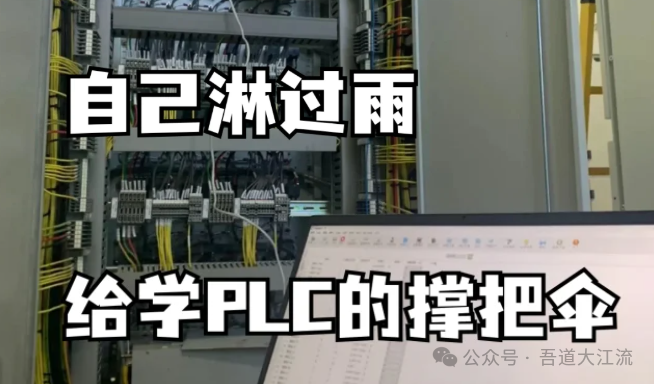
PLC Performance Analysis: Execution Time Monitoring and Program Efficiency Quantification!
Introduction
Hello everyone! Today I want to share a topic that is often overlooked but extremely important in PLC programming — execution time monitoring and program efficiency evaluation.Did you know? An optimized PLC program can save more than 30% of cycle time! This is not an exaggeration, but data verified through practice. Want to know how to quantify and evaluate the efficiency of your PLC program? Follow my thoughts as we explore this “secret weapon” for enhancing PLC performance!
Why Monitor Execution Time?
Let’s start with a vivid analogy: Imagine your PLC program as a factory assembly line, with each function block acting like different workstations. If you don’t measure the processing time of each workstation, how do you know where the bottleneck in the entire production line is?
Key Points Highlighted in Red:
<span>Execution time monitoring can help you:</span>
-
Identify performance bottlenecks in the program: Like using an X-ray to scan the program, accurately pinpointing the time-consuming parts
-
Quantify optimization effects: No longer just “it feels faster”, but precise data like **”cycle time reduced by 23.5%”**
-
Prevent potential issues: When the execution time of a function block suddenly increases, it may be a precursor to a fault
Three Practical Methods for Execution Time Monitoring
1. System Clock Method (Basic but Practical)
// Siemens SCL Example
VAR
startTime : TIME;
endTime : TIME;
elapsedTime : TIME;
END_VAR
startTime := T#0MS; // Record start time
// Your program code...
endTime := T#0MS; // Record end time
elapsedTime := endTime - startTime;Blue Tip:
<span>This method, while simple, is very effective in small programs and is particularly suitable for beginners.</span>
2. Hardware Interrupt Method (More Accurate)
For time-sensitive applications, you can use the PLC’s hardware interrupt function. For example:
-
Trigger hardware interrupts at the start and end of the program segment
-
Record timestamps through the interrupt service routine
-
Calculate the time difference
Key Points Highlighted in Red:
<span>The precision of the hardware interrupt method can reach the microsecond level, making it ideal for precision applications like motion control!</span>
3. Professional Tools Method (Most Comprehensive)
Modern PLC programming software usually provides performance analysis tools, such as:
-
Siemens TIA Portal’s **”Trace” function**
-
Rockwell Studio 5000’s **”Task Monitor”**
-
Mitsubishi GX Works3’s **”Execution Time Measurement”**
Blue Tip:
<span>These tools not only display execution times but also generate beautiful trend charts and statistical reports, making performance analysis intuitive and easy to understand.</span>
Program Efficiency Quantification Evaluation Indicators
With execution time data in hand, how do we evaluate program efficiency? I have summarized a set of **”PLC Program Efficiency Evaluation Quadrant Method”**:
| Indicator | Excellent Standard | Warning Threshold |
|—————–|—————-|—————|
| Cycle Time | < 50% of cycle time | > 80% of cycle time |
| Maximum Fluctuation | < 5% | > 15% |
| Critical Path Ratio | < 30% | > 50% |
| Idle Time Utilization | > 70% | < 30% |
Key Points Highlighted in Red:
<span>If your program has multiple items exceeding the "warning threshold", it urgently needs optimization!</span>
Real Optimization Case Sharing
A welding production line at an automotive parts factory encountered a slow PLC response issue. Through execution time monitoring, we found:
-
Problem Identification: A function block responsible for calculating weld quality occupied 42% of the entire cycle time
-
Optimization Measures:
-
Split complex mathematical operations into multiple cycles
-
Use lookup tables instead of real-time calculations
-
Optimize data structures to reduce memory access time
Results:
<span>Cycle time reduced from 15.6ms to 9.8ms, a decrease of 37%!</span>
<span>Welding quality pass rate increased by 12%</span>
Common Misconceptions and Solutions
In the process of performance optimization, I have seen too many engineers fall into these **”optimization traps”**:
-
Over-optimizing non-critical paths: Spending 80% of the time optimizing code that only accounts for 5% of execution time
- Solution: Follow the “80/20 rule” and prioritize optimizing the critical path
Ignoring I/O wait times: Assuming that slow programs are always a CPU issue
- Solution: Monitor I/O update times and consider using process image areas
Drawing conclusions from a single test: Not considering the variability of program execution times
- Solution: Conduct statistical analysis with at least 100 samples.
Advanced Tip: Establishing a Performance Benchmark Library
Blue Tip:
<span>It is recommended that every PLC engineer establish their own "performance benchmark library" to record the standard execution times of various commonly used instructions and function blocks.</span>
For example:
| Operation Type | S7-1516F (μs) | ControlLogix (μs) |
|—————-|—————|——————-|
| Bit Logic Operation | 0.1 | 0.15 |
| Integer Addition | 0.2 | 0.3 |
| Floating Point Multiplication | 0.8 | 1.2 |
| Array Access | 1.5 | 2.0 |
With this benchmark library, you can estimate execution times during the program design phase!
Interactive Questions
-
What methods do you usually use to monitor PLC program execution time? What difficulties have you encountered?
-
What is the most successful PLC program you have optimized, and how much did its performance improve?
-
Do you have any unique experiences or tips for program efficiency evaluation?
Conclusion
Remember: Optimization without measurement is like shooting with your eyes closed — you might hit occasionally, but you will never become a sharpshooter. Execution time monitoring and program efficiency evaluation are the “sights” in PLC programming, allowing you to aim accurately with every optimization.
I hope this article helps you establish a scientific PLC performance analysis system. If you encounter any issues in practice, feel free to leave a comment for discussion. Let’s work together to create faster and more reliable PLC control systems!
ShareSaveViewLike